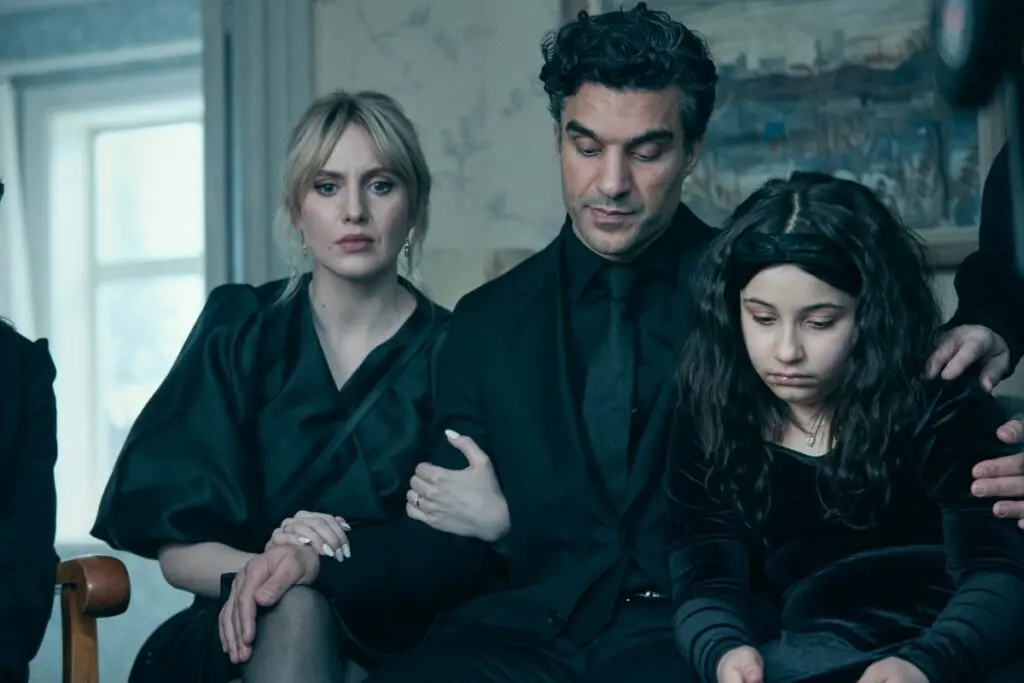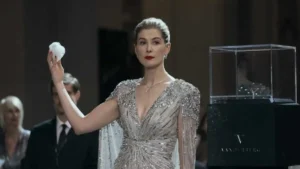Netflix’s Scandi noir The Glass Dome is pretty good, taking the quintessential genre framework and delivering a very solid version of it that doesn’t try to be anything it’s not. It even builds to a conclusive ending, tying up most of the loose ends and providing a good amount of dramatic and emotional payoff, even if it’s suspiciously tight-lipped about some of the finer details.
Luckily, I’m on hand to provide my baseless theories to try and paper over some of the cracks the story as-presented might have left behind. Some of this stuff is obvious, some of it less so, and some of it is flat-out speculation, but taken together, it should help to give audiences a clearer picture of what happened and why and potentially answer some of those burning questions you might have come away with.
Let’s start with the simple stuff and build outward from there.
Who Is Ecki?
“Ecki” is the nickname that Lejla gave to the man who kidnapped her, and who ultimately turns out to have kidnapped Alicia (and several other dark-haired young girls). The finale reveals that Ecki is Lejla’s adoptive father, Valter.
What Does “Ecki” Mean?
Lejla explains that she called her abductor “Ecki” because of the noise the light made when it was turned on. I wasn’t sure what this meant — a bit of onomatopoeia maybe? — so I looked into it a little more. The word means “no” in Icelandic and apparently “nope” in Swedish, which is probably what Lejla was thinking whenever he arrived, but I imagine it was intended more to be a child’s word for a specific noise.
Why did Valter Kidnap Lejla and the Others?
The Glass Dome is a little vague about this. It’s implied through dialogue that Valter and Tomas’s father was an abuser, and that their mother was complicit and did nothing to protect them. Because of this, the brothers hated their mother, and Valter, evidently damaged by the trauma, selected victims who resembled her so that he could give himself power over his mother that he never got in real life.
Lejla profiles Ecki with Valter earlier in the season, noting his fetish for power and control, and theorizing that the fascination with long, dark hair stems from childhood. She was right. That kind of hair reminded Valter of his mother and the complete lack of power he felt during his childhood. He tormented and killed his victims in an effort to reverse that power dynamic and exert control and pain over his mother.
Tomas responded to the trauma differently — he started to drink. But it’s also strongly implied that this allowed Valter to gaslight him throughout his life, flexing a different kind of control. We see this when Tomas gets drunk and brings up Valter killing the fox cubs as a boy, and Valter convinces Tomas that he was the one who did that. But when we later see Valter fly fishing (he uses the hair of the dead girls to create bait), we see him tossing the caught fish on the shore, letting them die painfully without a care in the world. So, it was he who had a fondness for killing animals.
Who Killed Milena and Louise?
Again, it isn’t explicitly shown, but it was Valter who killed both Milena and Louise. One suspects that in both cases, it was to make kidnapping their children easier. Suicide was used as a cover in both murders. Lejla even grew up thinking that her mother committed suicide, a lie perpetuated by Valter. The precise nature of Louise’s demise is revealed more quickly, but the suspicion falls first on Said and then on Tomas, so Valter is never suspected.

(L to R) Gina-Lee Fahlén Ronander as Louise, Farzad Farzaneh as Said and Minoo Andacheh as Alicia in The Glass Dome/Glaskupan Cr. Courtesy of Netflix © 2024
Who Kidnapped Elma?
Elma is the anomaly in the kidnappings, since she was taken by Martin, aka Daniel Frick, and not Valter.
Daniel was obsessed with serial abductors and particularly fascinated with Lejla’s case. He had clearly ingratiated himself into the search for Alicia to get closer to Lejla, and kidnapped Elma to try and emulate his idol, Ecki. It was also Martin who had crept into Lejla’s room and drawn a picture for Isla. This is confirmed by the red birthmark on his wrist, which Isla identifies, and later, when Lejla passes out in his cottage, since she knocks over a bunch of his drawings.
Valter killed Daniel both because he couldn’t have a copycat stealing his thunder and because he had threatened Lejla, whom he seemed to have some genuine feelings towards.
Why Did Valter Pay Adde to Sabotage the Mine?
It’s established in The Glass Dome that the email instructing Adde to sabotage the mine came from the same server as the video of Alicia sent to Kristina, so it’s clear that Valter was the one to send it. But why would he do that? It’s never quite explained, but I have a personal theory that I think the ending gives away.
The final scenes of the series establish that Valter’s victims had been dumped in the river. It would be likely that the mine’s activities would have eventually led to those remains being discovered.
The other possibility is that Valter was trying to capitalize on the anti-mine sentiment and the general antipathy felt for Said by racists like Jim and Adde to have Said “dealt with” without having to get his own hands dirty, especially since Said was increasingly pushing for progress in the search for Alicia. But given how Valter dealt with all of his other problems, this seems a bit roundabout for him.
Why “The Glass Dome”?
Sorry, personal nitpick here, but Lejla and Alicia are held in a box, not a dome. The show’s original Swedish title is Glaskupan, which translates to “diving bell”, a chamber used to transport divers and equipment underwater. That’s a little closer to being accurate. Glaskupan is also the Norwegian title of Sylvia Plath’s novel The Bell Jar, which is about the protagonist descending into mental illness. So, that could be relevant too.
Either way, though, it’s definitely not a dome.




